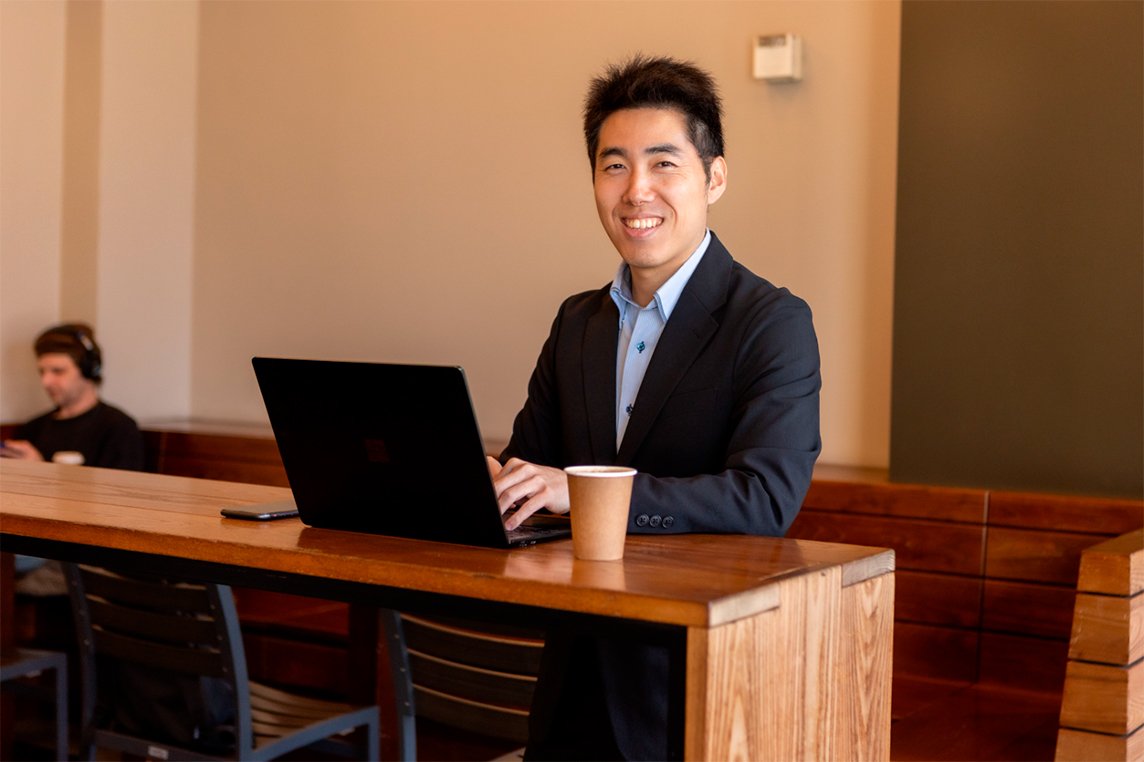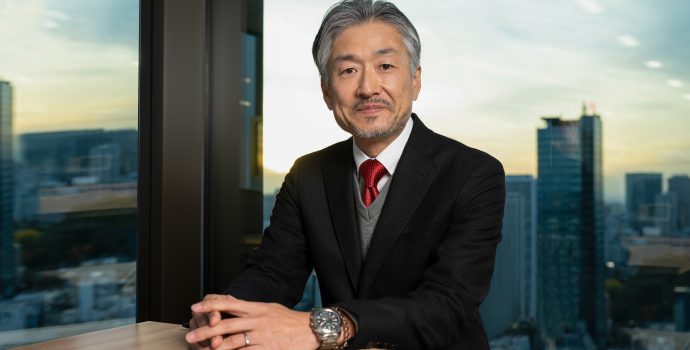FEATURED EMPLOYEE
How does Kevin Iwahashi solve problems? Clear vision and a focus on people.

Role |
|
Customer Success Manager / Assistant Manager |
Division: |
|
Project Management / Customer Success Management |
Location: |
|
San Jose |
Expertise: |
|
Microsoft Power Platform |
Experience: |
|
3 years at SYSCOM |
Hobbies: |
|
Marathon, Karate, Reading, Piano |
If there’s anything you can say about Kevin Iwahashi, it’s that he understands the value of knowing where you’re going. An engineer of many titles over this three years at SYSCOM GLOBAL SOLUTIONS—Solution Architect, QA Engineer, Customer Success Manager, and more—he knows what he’s doing.
“I solve problems.” From designing a solution using AI camera systems on warehouse floors to managing cabling and office equipment, he’s an engineer solving problems at heart. Even jumping from his previous gig as a factory automation engineer to this one, each with its own unique programming language, had the same principles. “The fundamentals were the same, I just had to learn a new syntax.”
These days, he specializes in digital transformation, and finds a similar problem across most projects. “The most important part is having a clear vision of the digital transformation (DX) project,” he says. “Too many people think automation is the key element of DX—it’s not. DX requires having a vision and designing a data pipeline first. Automation and DX are not the same thing.”
There are a couple of reasons people conflate automation and DX, according to Kevin. One is simply a lack of education in this field: it’s still very new to a lot of people, and not every company is able to fund an entire department devoted to innovation. “SYSCOM has a number of enterprise clients, but we also have smaller businesses with 50 people or so. They just don’t have the data pipeline built yet; they’re still streamlining their business flow.”

“Automation is great, but very conceptually confined. Simple programming or Robotic Process Automation (RPA) does a sequence of tasks for you, and that’s it. But all that does is simplify a single 2-hour task into 30 minutes. It’s not scalable.”
“Digital Transformation builds the data pipeline, and once that gets accumulated, it’s an asset. That’s what enables scale.”
Focusing on automation without considering digital transformation first is short-sighted. “A business is data flow: a chain of data flowing from customer to sales person to the back office. When you accumulate this data, you can analyze it, visualize it, and that’s when you can really know what’s going on with your business. But when you just automate it, you don’t get the benefit of having a good grasp of where you stand.”
“All you’ve done is make a task simpler. You haven’t designed the data pipeline.”
Which brings Kevin to the second reason people think automation and digital transformation are the same thing. “It also depends on the stage of the company. Some enterprise companies have more resources and can spend the time required to do an in-depth analysis, but smaller companies don’t always have the manpower. That’s where we come in.”
Successful companies have a clear vision of where they’re going.
Kevin Iwahashi
Customer Success Manager / Assistant Manager
Knowing the difference between automation and digital transformation is key, but it’s also vital to know what you want to do with them once you have them running. Per Kevin: “Successful companies have a clear vision of where they’re going.”
“When I say ‘clear vision,’ I don’t mean the process. I’m talking about the goal. Where do you want to go? You don’t need to know the specifics or processes—that’s for specialists. But as the leader of the project, you have to tell me where I’m going,” says Kevin. “I see a lot of projects that say, for example, ‘We want to utilize AI, let’s start an AI project!’ They don’t know where they want to go, they just want to start a project. You have to envision your end state.”
He understands the issue, of course, as it’s the same issue at the root of most corporate (and people) problems: humans. “A company is made up of individuals, so when you deep dive into the root cause of the problem, it’s human nature.”
“If the decision makers are willing to make changes, things will change. If they’re not, they won’t,” Kevin laughs. “The root cause is the drive, or the willingness, to make change. Will you take the time to identify where the problem actually is? If you’re aware of the problem, are you acting on it?”
“A company is just a group of people, and that can lead to friction. It’s just human nature.”

Understanding the human root of most issues is something Kevin extends to himself, too. After all, all the solutions he designs come from a person, too: himself. “Finding the solution starts with asking questions, and I always start with myself. I need to know what questions to ask, to see things from many angles, and to avoid tunnel vision. If I only try to answer the customer’s question, I’ll only get to an answer. But when I try to see the underlying problem, I get to the solution.”
“For example, this one person needs a special report. Do they need it, or does their manager? Or someone in another department? Why aren’t they able to get it?”
Being able to be so self-reflective and adaptive is an ongoing task, and Kevin takes it seriously. “I read around a hundred books last year,” he casually says. “I don’t really have a specific genre. I read a lot of business, psychology, economy, and science. An interesting one I recently read was The Science of Food.” Staying abreast with so many fields keeps Kevin sharp and well-rounded. “Reading all these books helps me formulate questions that for other people might be difficult to,” he says. “You need the seeds of ideas, and reading books is planting seeds of ideas in your brain.”
He continues his formal learning, too, earning 3 certifications last year. “I also studied about 90 hrs in the summer last year outside of work,” and his personal development doesn’t stop there. “I ran a marathon last year and will run another this year. I used to run the OC Marathon and the LA Marathon, and I ran Honolulu last year or the year before. I started when I graduated school. It’s good exercise and mental training.”
As impressive as running multiple marathons is, he still knows which one was his most difficult. “The hardest race I ever ran was my first half-marathon. I’ve run full marathons and an ultramarathon, but that first half-marathon was my hardest.”
But even all the way back then, at the very start of his journey, he still had one thing going for him.
He had a clear vision of where he was going.
All Employee
Spotlight Pages
Employee Spotlight: Hector Melo
How Hector Melo’s desire to keep growing sets the tone for SYSCOM. “You don’t stop learning at SYSCOM. You always learn something new.”
Employee Spotlight: Maiko Nakamura
Ask for help and don’t be perfect: Maiko Nakamura’s simple advice. “Our product isn’t just solutions, it’s people.”



